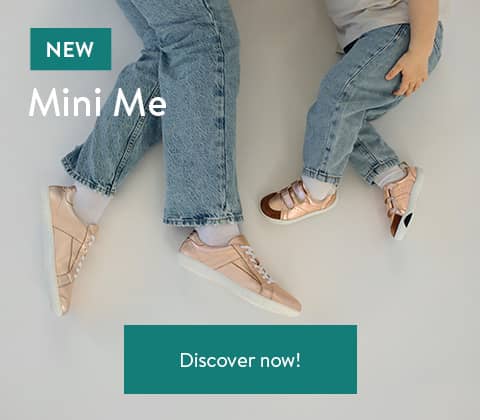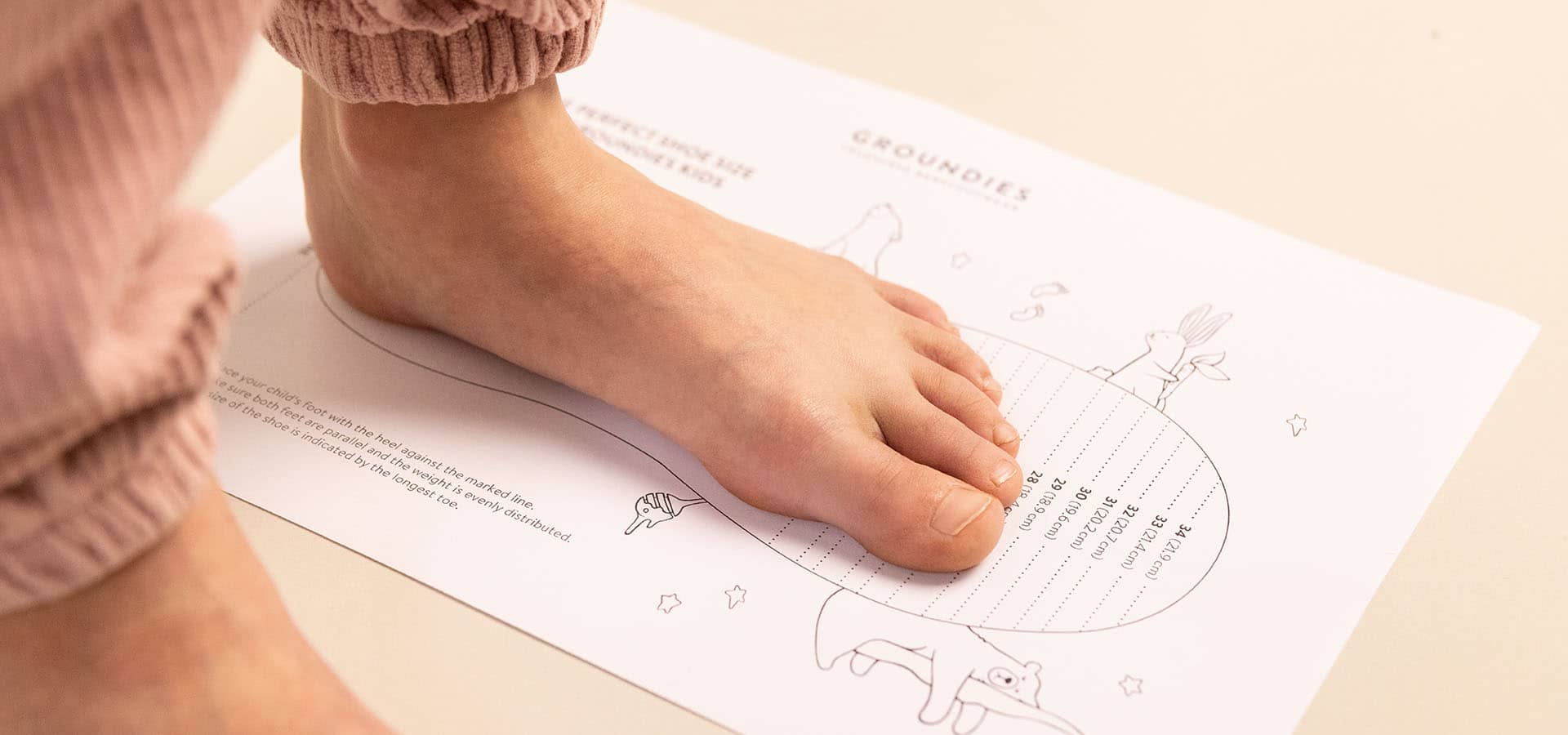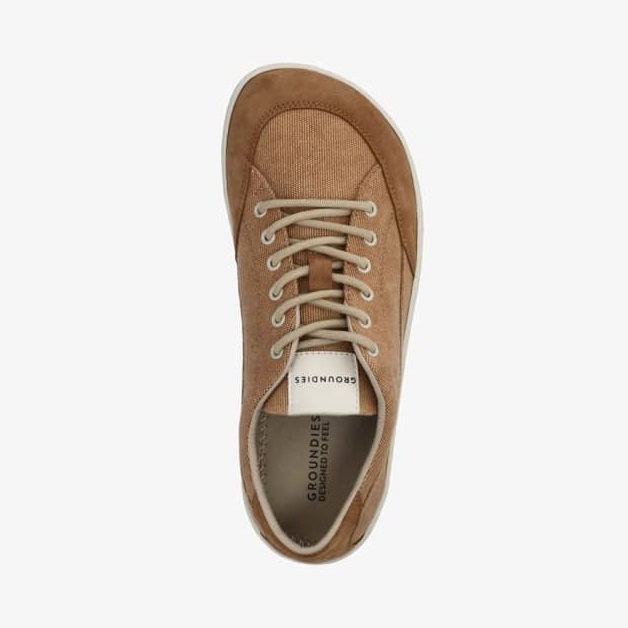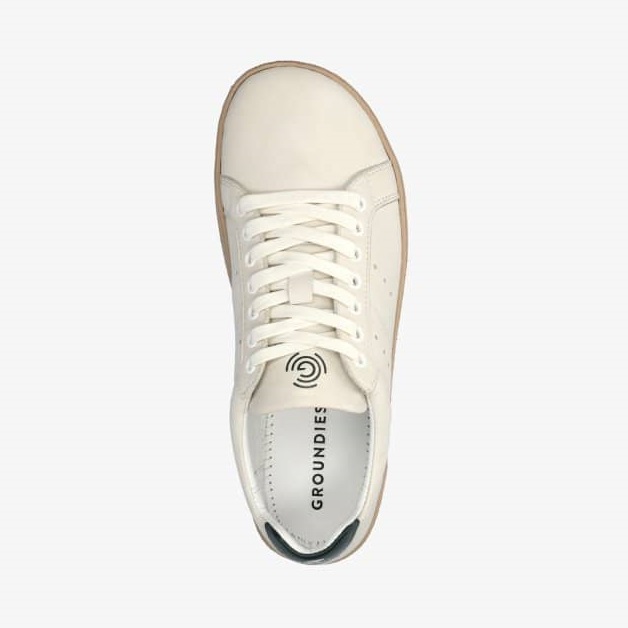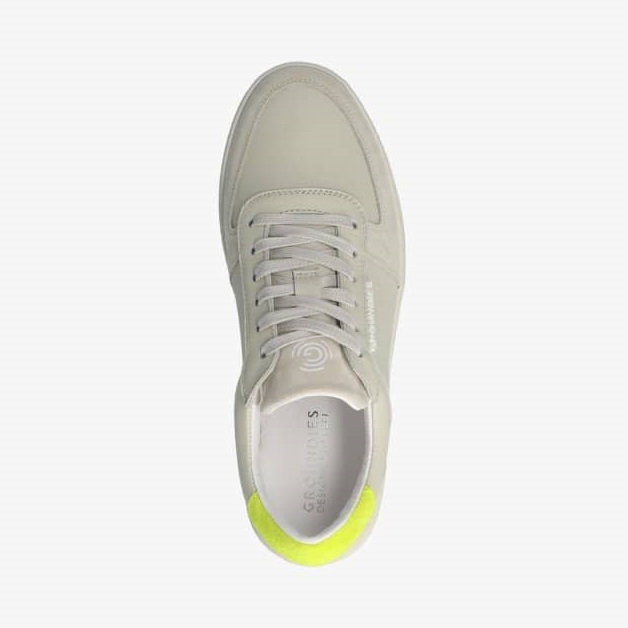How to Measure Your Feet - Finding the Right Shoe Size?
Feet are unique and vary in many ways. When shoes feel uncomfortable, it’s often not the length that’s the issue but the width. Here at Groundies, we’ve intentionally designed barefoot shoes with a spacious toe box to provide ample room and freedom for your toes. However, even for the perfect barefoot shoes that fit well and are exceptionally comfortable, it’s best to measure your feet accurately. We want to ensure you have a relaxed wearing experience and assist you in finding your ideal barefoot shoe. So, take a few minutes to read this post on how to measure your feet correctly.
Determining Your Shoe Size for Barefoot Shoes
Did you know that our feet can be over 1 cm longer and wider in the evening compared to the morning? To determine the right shoe size, the first rule is to measure your feet in the evening. The second rule: when in doubt between two sizes, choose the larger one. (For more information, see our size chart here) -> link to size chart) Additionally, having an extra pair of hands can be helpful. The most accurate results are obtained when you evenly distribute your weight on both feet. However, if you need to measure alone, be cautious not to shift your weight unintentionally, as this can make one foot appear wider.
Here’s how to measure your shoe size correctly:
- Place a sheet of paper on the floor so that one end touches the wall. Use a piece of tape to secure the paper to the floor to prevent it from moving. Stand barefoot on the paper, ensuring that your heel touches the wall.
- Have someone else trace the outline of your foot with a pen. Make sure the pen goes straight down and does not lean outward or inward, as this could result in an inaccurate foot sketch—either too large or too small.
- Measure the length from the longest toe to the back of the heel. Repeat the process for your other foot. If there is a difference in foot lengths, use the measurement of the longer foot as your reference for selecting the right size. Compare this larger measurement to the respective size chart for the article. We have different size charts because we offer different soles to cater to various needs. Therefore, please be aware that your determined shoe size may vary within our shop.
- For other shoe brands, knowing your foot length may suffice. However, with us, you have the option to consider your foot width when selecting your size. It’s best to measure this as well to ensure the correct fit: Regular, Barefoot, or Barefoot+? Mark the widest point of your foot with two thicker lines on the left and right, then measure the distance in between.
Groundies Regular, Barefoot, and Barefoot+
Our barefoot shoes for narrow feet, regular-width feet, and wide feet
Here at Groundies, we’ve developed barefoot shoes in three different widths. Regular barefoot shoes come with a regular toe box, as the name suggests. You’ll find all the familiar benefits of our Groundies barefoot shoes, such as a thin, flexible sole and a finely tuned barefoot feel, but with a normal-width toe box. On the other hand, Barefoot signifies barefoot shoes with a wider, anatomical toe box. If you have wider feet or desire more toe room, this option provides an expanded toe box. Barefoot+ is our widest variation of barefoot shoes, offering even more space in the toe box.
Why Finding the Right Shoe Size Matters
Finding the right shoe size is essential if you want to enjoy your barefoot shoes for a long time. Your feet will thank you, and your shoes will too. Ill-fitting shoes wear out faster. Oversized shoes can develop creases with regular wear, which can lead to friction on your feet. In shoes that are too roomy, your feet may slide forward while walking, causing the heel to lift and the toes to press against the front of the shoe. On the other hand, shoes that are too tight tend to wear out more quickly and can result in painful consequences, such as blisters due to increased friction. If you don’t have enough space in the toe box, you might create “problem areas” on your feet. For example, wearing shoes that are too small can promote the development of hammer toes and claw toes, potentially causing long-term toe misalignment. These are issues that nobody wants, but you can avoid them by determining your correct shoe size and investing in healthy footwear like Groundies.





